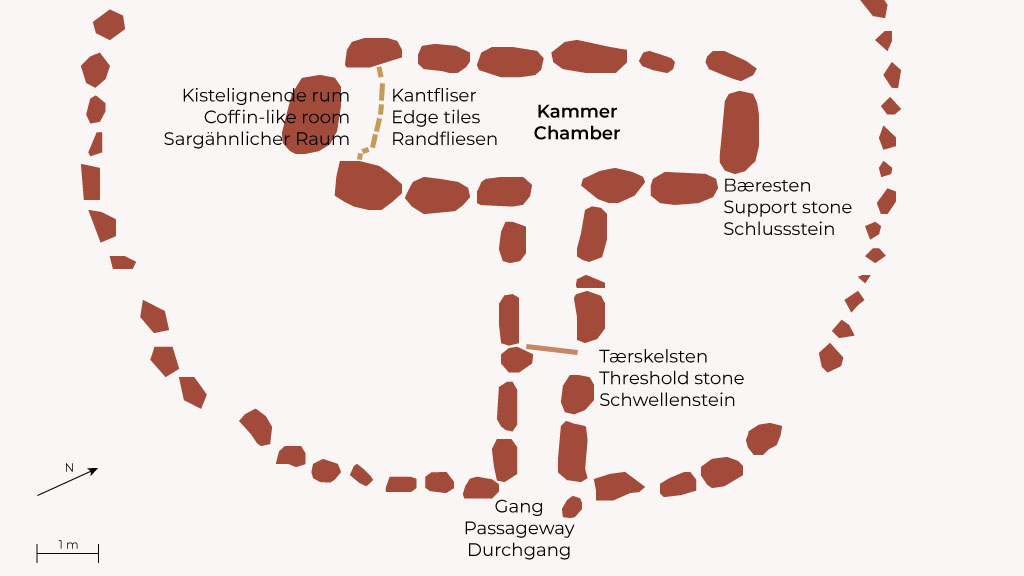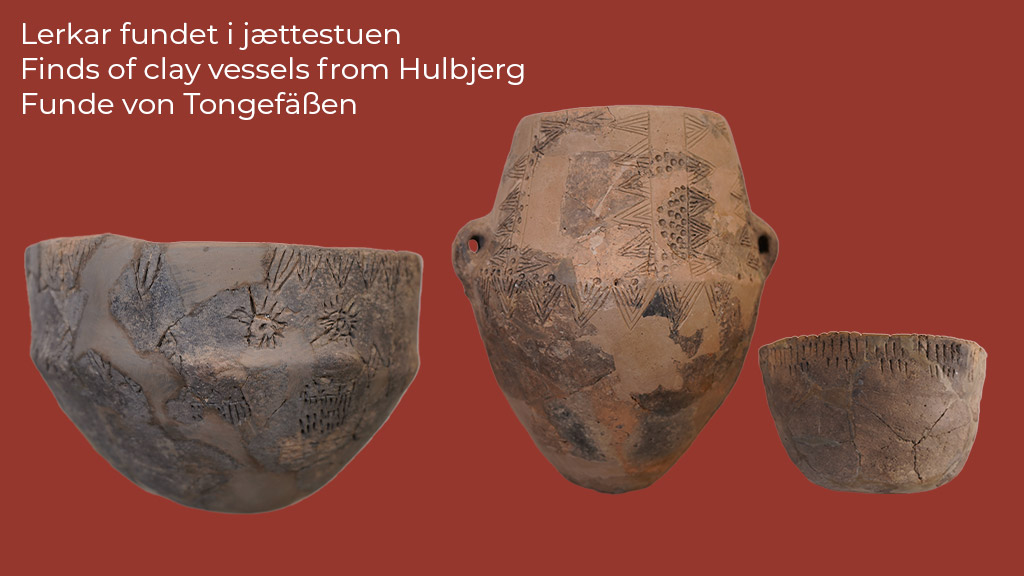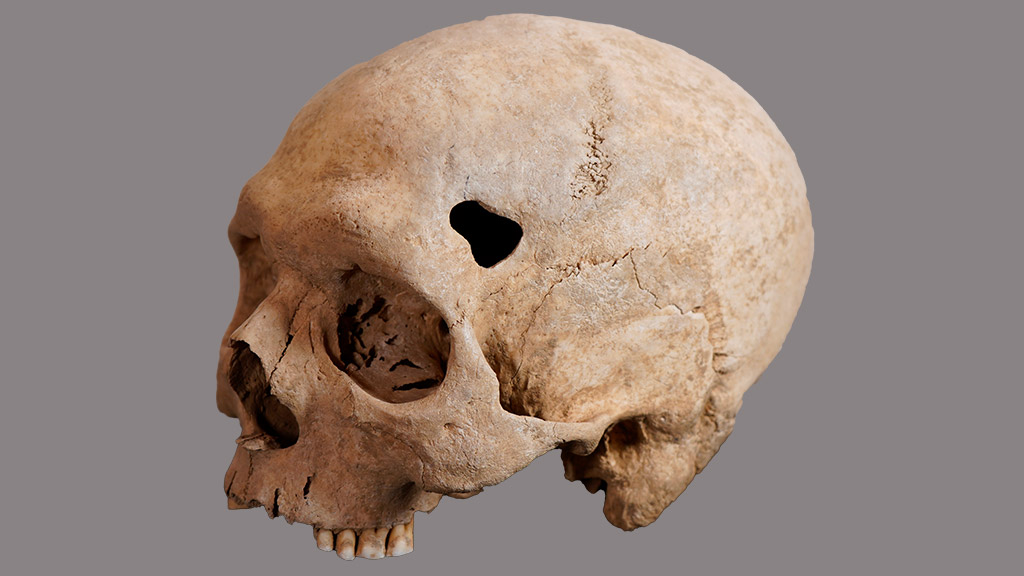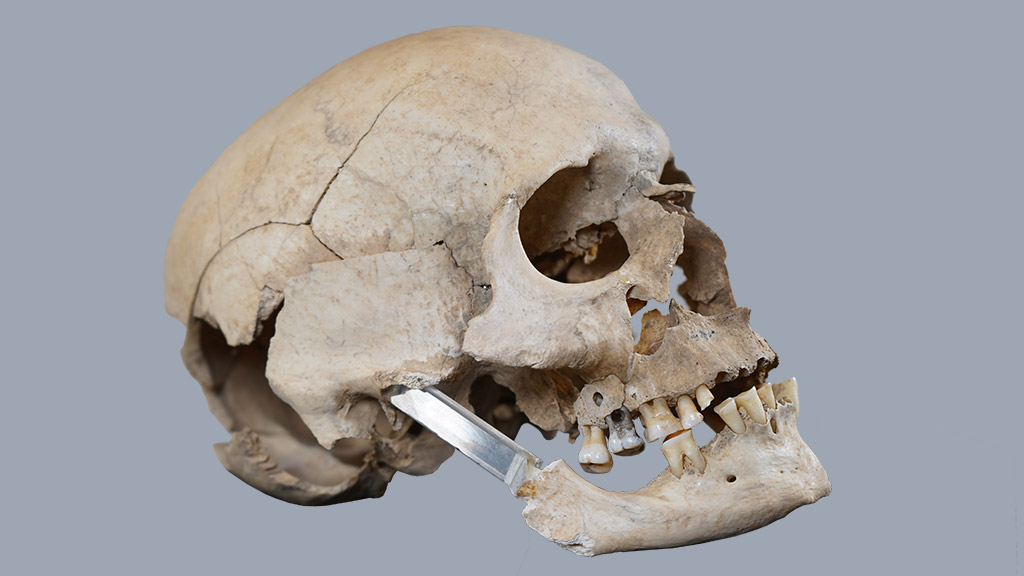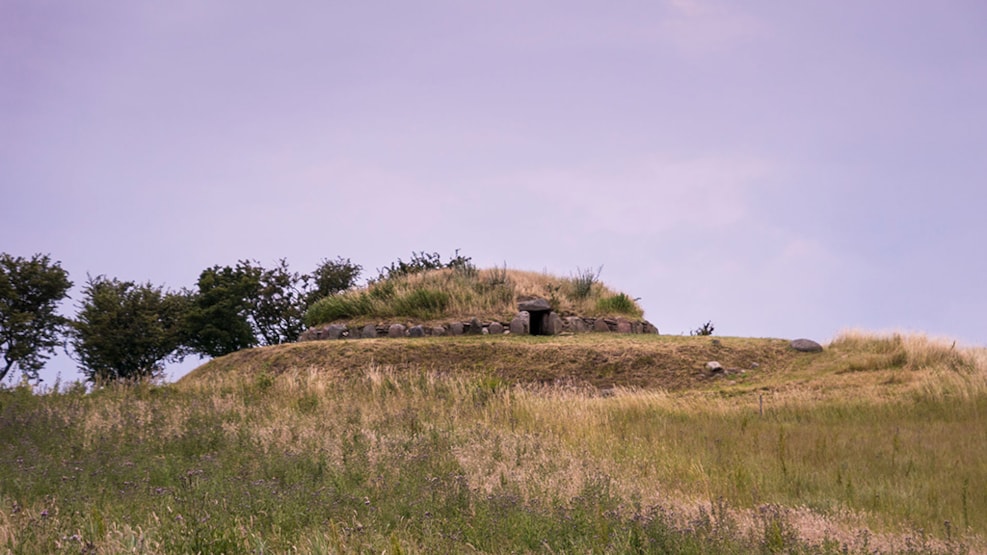
Hulbjerg Passage Grave
Stone Age life, burial customs and early surgical methods was found in Langeland's finest passage grave.
Langeland's best-preserved passage grave is 5000 years old and is situated in a round mound with kerb stones and dry-stone walls. It was used for burials and rituals. Around 1850 at least six similar burial mounds were found in the Hulbjerg area.
The passage grave
On the east side of the hill the passageway opens between two kerb stones. The passage, which is 5m long, has two door frames with stone sills and thresholds. At the end there is a large threshold stone which may have served as a door.
The chamber is square, 6.5 x 2 metres, with 13 support stones and a well-preserved wall. Three of the five original capstones have survived, while the rest are covered with granite beams. The floor is tiled. At the southern end there is a small coffin-like "room", the function of which is unknown.
More than 1,000 years of burials
Over 2,000 human bones of at least 36 adults and 17 children have been found in the passage grave. Using carbon 14 dating, the oldest bones are 5,000 years old and the youngest date from the beginning of the Bronze Age around 1700 BC.
The bones were scattered and partly sorted as older burials were cleared away to make way for new ones. Examination of the bones from the grave has shown that the men were on average 172 cm tall and the women 157 cm.
Clay vessels, weapons, arrowheads, flint tools and amber beads were found in the passageway and at the southern end of the chamber.
The trepanated skull from the passage grave
One of the skulls has a trepanation hole on the left side of the forehead, an operation where part of the skull wall is removed. About 10 trepanated skulls are known from the Neolithic period in Denmark, mainly from men with wounds on the left forehead, possibly from battle. The hole in the Hulbjerg man's skull has healed edges, showing that he survived the operation.
Denmark's oldest dental drill
South Funen Archipelago UNESCO Global Geopark
Hulbjerg passage grave is designated as an ancient monument with special cultural heritage in South Funen Archipelago UNESCO Global Geopark.
You can read more about the UNESCO Global Geopark at geoparkoehavet.com
